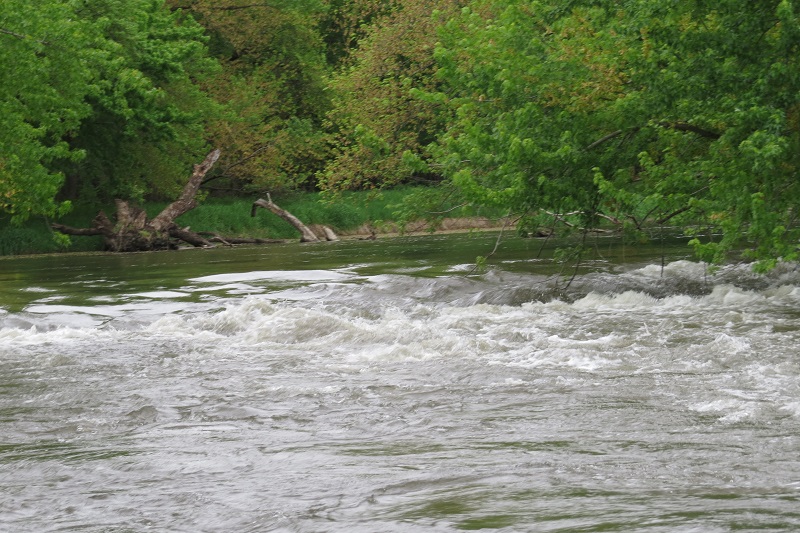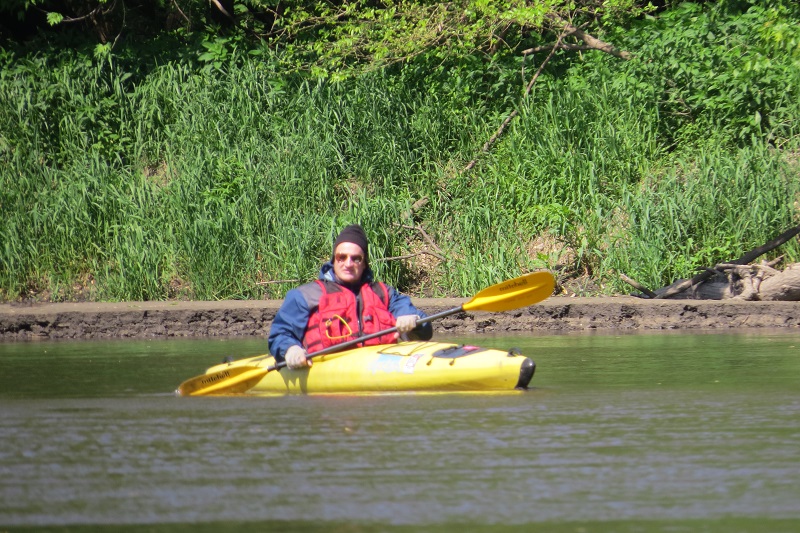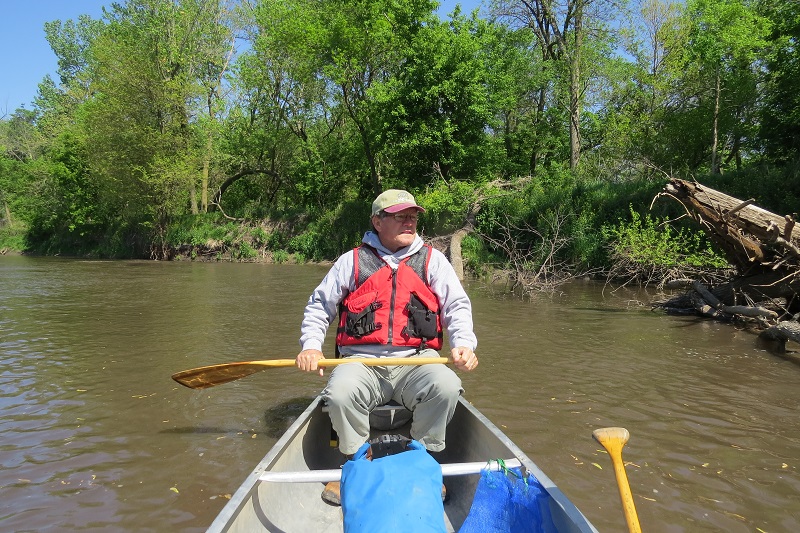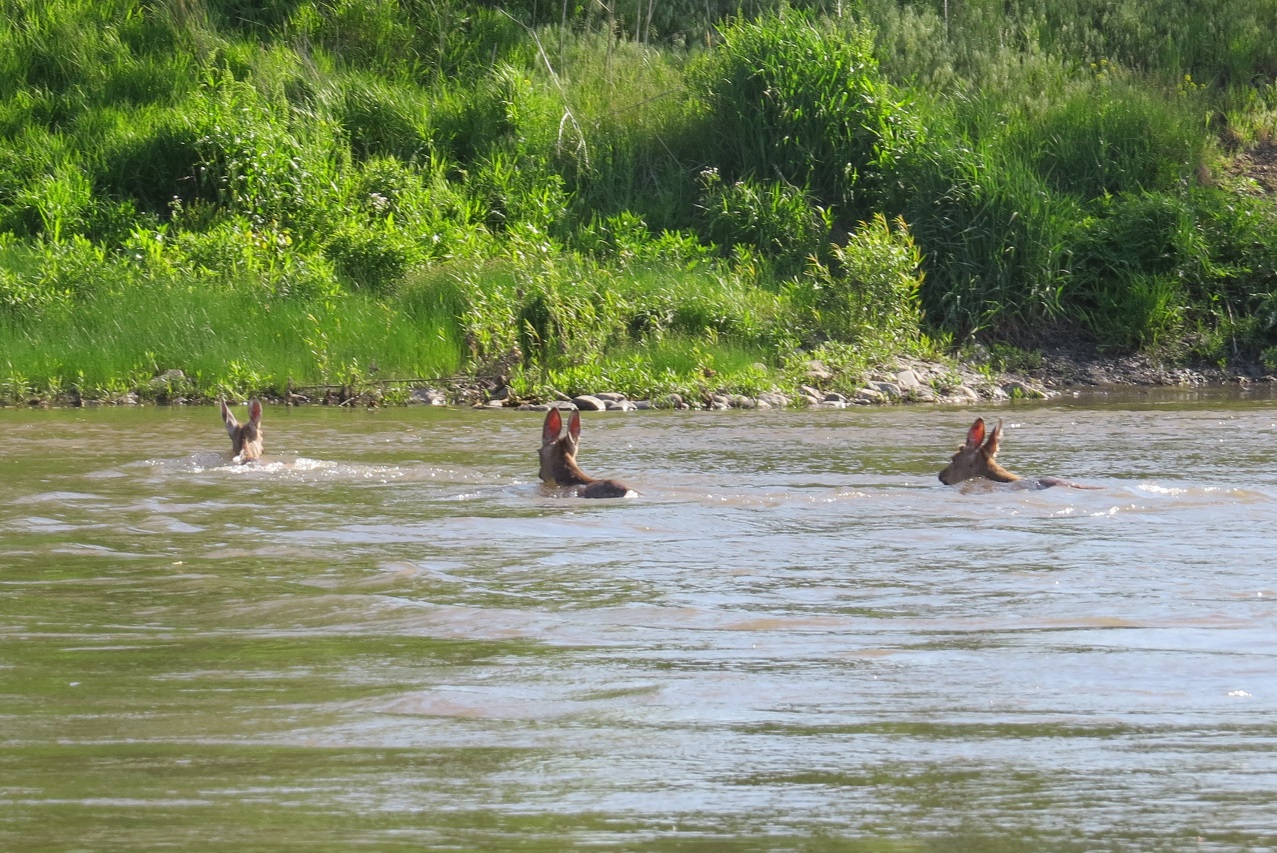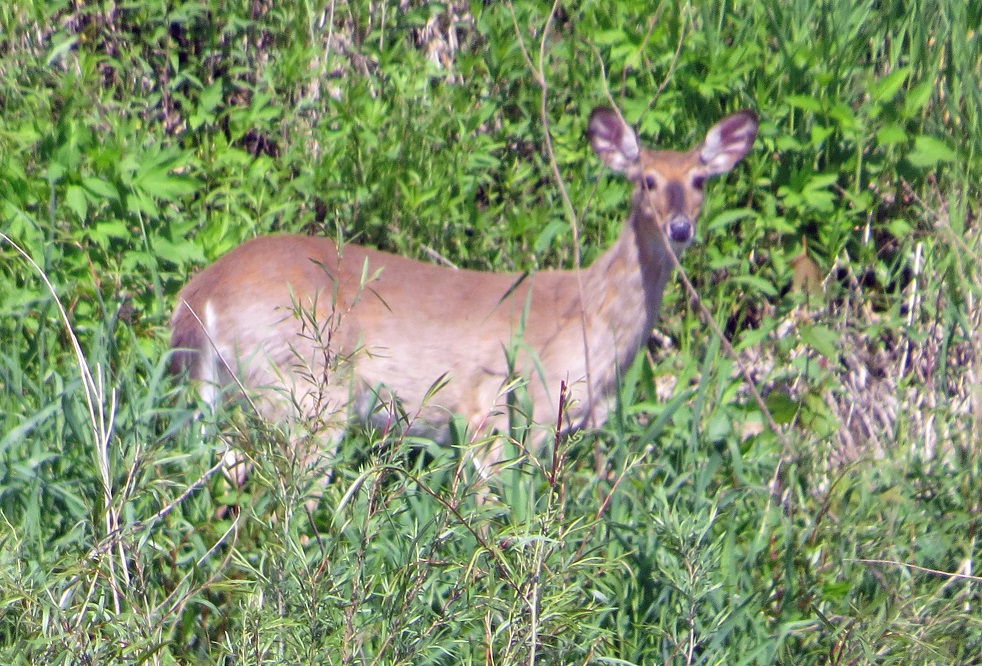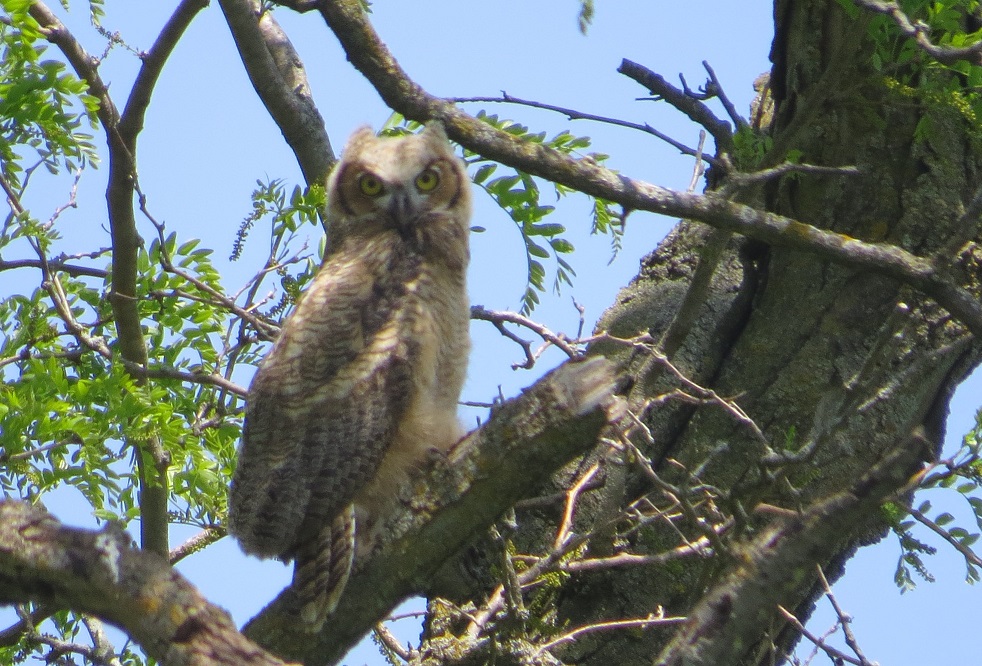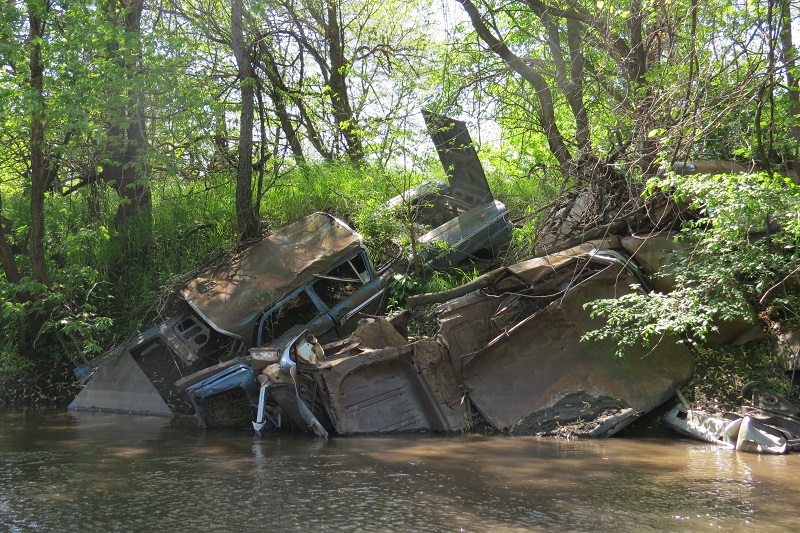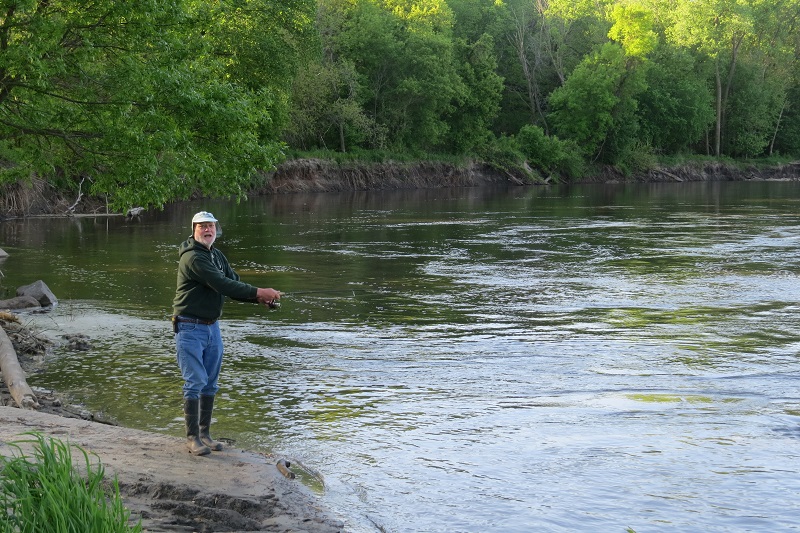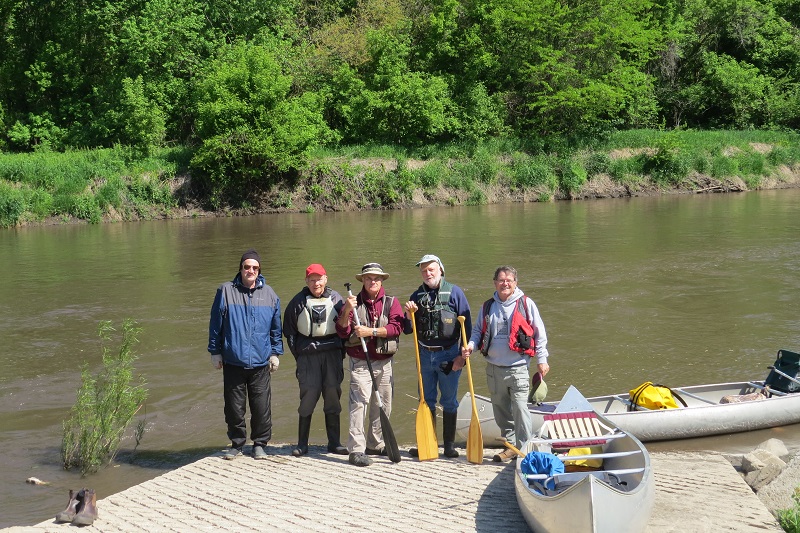
The water was rushing over the low-head dam on the North Raccoon River at Grant Park near Auburn in Sac County, Iowa. Below the dam the river boiled, creating a circular current with strong eddies near the shore and pushing the water upstream toward the dam.
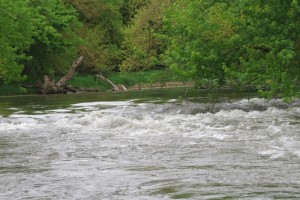
The strong current and the high water convinced me this was not a dam I would try to paddle over.
Our group of four paddlers — Mike Murphy, Don Wall, Mike Delaney and I — gave some serious thought about starting our 80-mile trip farther down the river.
On the previous night, thunderstorms rolled across northwest Iowa, and an F-1 tornado caused damage in Lake City, only nine miles from our cabin. Remnants of the storm lingered in the area. A light mist was in the air, pushed by a brisk southerly wind that made it seem colder that the 45-degree reading on the thermometer.
According to the weather forecast, the conditions would be like this all day, and we would be paddling into a headwind. It was an easy decision for a group of old retired guys to make: we would stay at the cabin another day.
The next day we looked for places to launch our canoes. One of the sites had the gate locked, and two other county parks did not have boat ramps for launching. These parks had steep, muddy banks with rocks and rip-rap along the shore, which with the high water and swift current made it too risky to launch at these sites.
We launched instead at McMahon Access in Greene County, below a low head dam. We finally got on the water. Our destination was Squirrel Hollow Park near Rippey, 20 miles downstream. We would camp there for the night. The current pushed us along at a fast rate that made paddling easy.
The recent rain caused the high water and swift current, but it also produced run-off from the bare farm fields, making the river a chocolate brown color. We passed several creeks that flowed into the Raccoon River, and the creek water was a lighter green color and appeared to be clearer with less sediment.
We made several chemical tests for nitrates dissolved in the water, with the results ranging from 15 to 20 milligrams per liter, up to twice the safe level allowed for drinking water.
We knew more nitrates would be added as the river flowed to Des Moines.
After thousands of years of flowing, the river has cut many steep banks along the shore, exposing tree roots and several layers of contrasting soil colors. One place had a recent “slumping,” where tons of clay and loess soil broke away from the main bank and fell into the river.
It is always interesting to watch the birds and other wildlife on a float trip. The quiet travel by canoe allows people to get much closer to them than in a motor boat. Swallows were always darting through the air around our boat, and the birds were feeding on insects near the surface of the water. The swallows put on a show with their aerial acrobatics, sometimes flying only a few feet above our heads.
I saw five species of swallows as we traveled downstream.
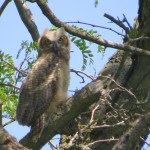
We also observed sandpipers feeding along the shore, and wood ducks and blue-winged teal would fly from almost every log jam we passed. Great blue herons and Canada geese gave out alarm calls when we got near their nesting and feeding areas. It is always a thrill to see a bald eagle perched on a tree limb above the river. We saw two during our adventure.
Mike Delaney dubbed this trip the “Warbler Float.” We hoped to see lots of warblers migrating north, but I think we were too late. We only saw four birds in the warbler group: yellow-throated, yellow-rumped, red start and the yellow warbler.
A total of 44 species of birds were recorded on the float trip.
When we came to a small island in the river, Don Wall and Mike Murphy were in the lead boat, they went to the right. Mike Delaney steered our boat to the left side of the island. The lead team must have startled a family of deer because a large doe jumped into the river a few feet in front of our canoe and was soon followed by her two fawns.
They swam to the opposite shore, shook water from the fur and then all three of them stared at us for a few seconds before bounding into the woods.
Squirrel Hollow was a good place to camp. We had the campground to ourselves. It was a beautiful night, no wind, no rain and a clear sky that allowed us to see the planets. Venus was low in the western sky, and Jupiter glowing brightly overhead.
Nearly a dozen constellations were shining brilliantly in the moonless sky, and the Milky Way was beginning to appear on the eastern horizon when I zipped my sleeping bag.
I fell asleep listening to a chorus of barred owls.
At sunrise we cooked oatmeal and brewed coffee on the Coleman stove, then launched our canoes below the dam at Squirrel Hollow Park and headed downstream to Perry. For the entire 20 miles, we fought a head wind that slowed our progress and taxed our bodies.
When we heard the forecast for the next day — wind, rain, and storms — we again changed our plans. We cancelled the trip and ended our journey. Our planned four-day, 80-mile float trip had been reduced by half because of bad weather. I was disappointed. Perhaps we will try again this summer or next year.









